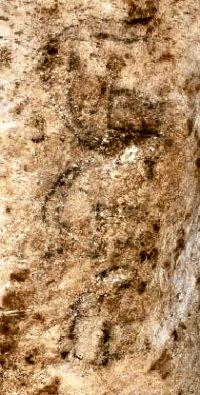 |  |  |  |  | ||
Some significant prehistoric paintings from the Los Murcielagos cave (Zuheros, Cerdoba, Spain) have been studied by Raman microscopy in order to determine the nature of the pigments used. Amorphous carbon (charcoal) has been found in the black pictographs and haematite (-Fe2O3) has been found in the red ones. Clear differences between the degrees of alteration of paintings on several types of surfaces are observed. Therefore, samples of the corresponding rock substrata, cave walls and floor have been taken and analysed by IR spectroscopy. The rock of the painted panels, walls and floor is essentially calcite. Nevertheless, significant quantities of nitrates have been found on surfaces of the cave exposed to possible bat droppings. Paintings on these surfaces show a high degree of alteration, whereas pictographs on surfaces without nitrates, i.e. in positions protected from possible excrement falling from the top of the cave, are well preserved. The presence of nitrates is associated with the alteration of pictographs drawn in charcoal.








